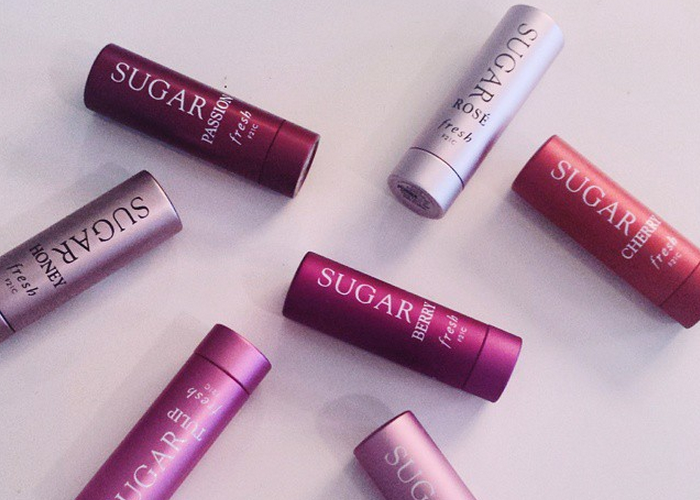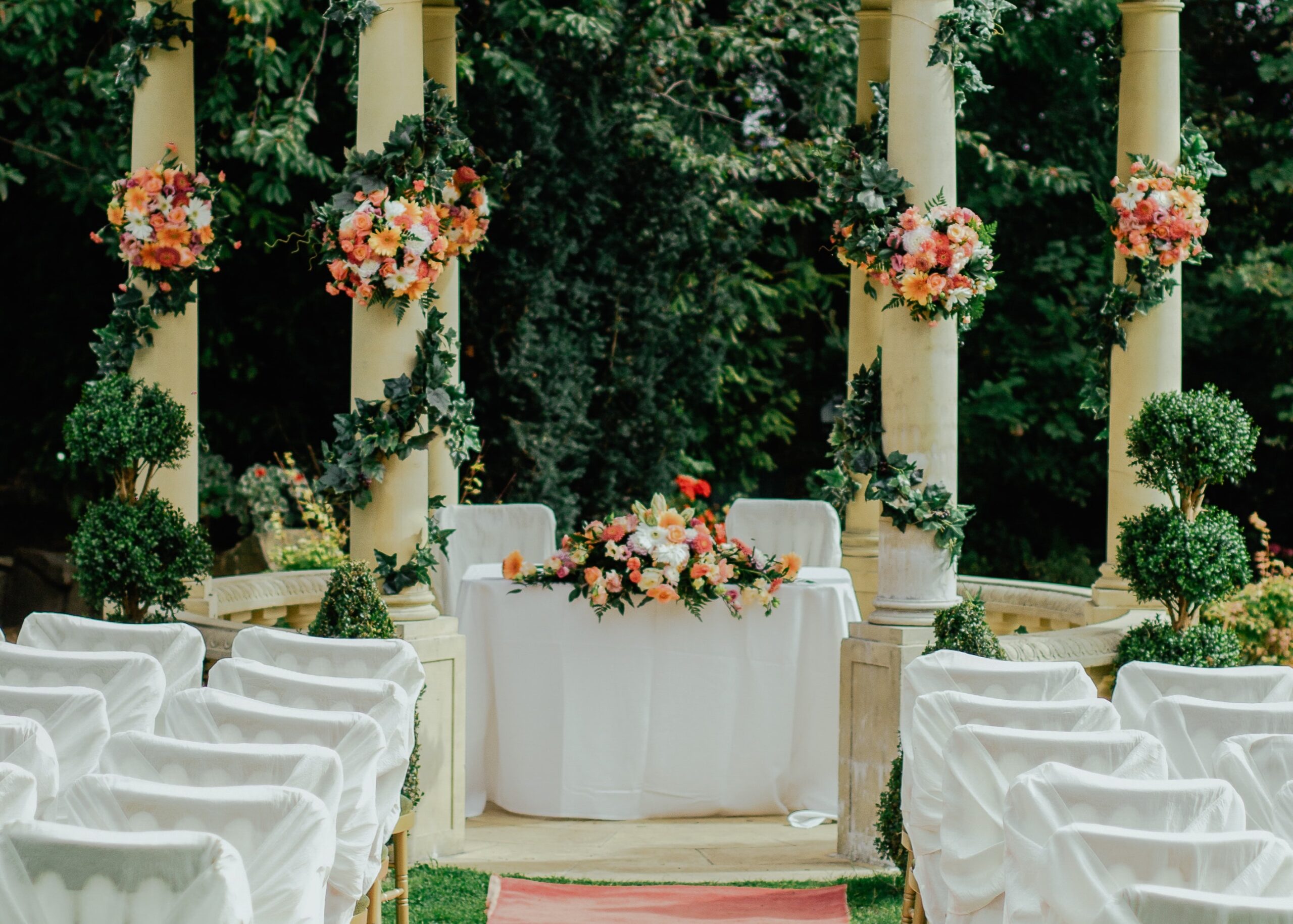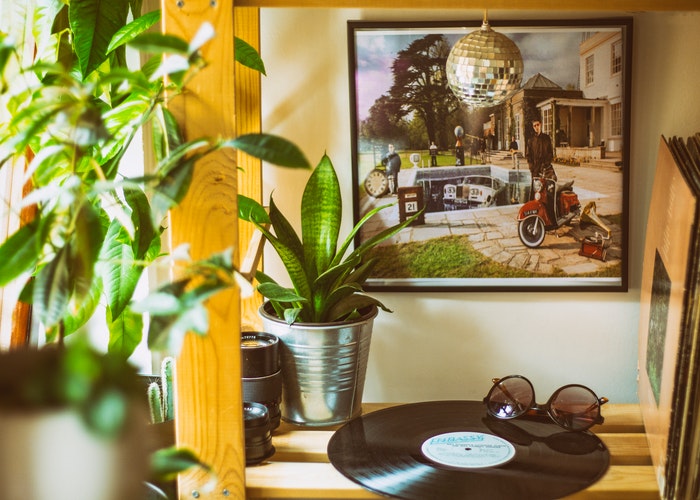On Throwing Out Old Clothes, And Everything That Goes With Them
 This morning I cleaned out my closet. I filled three grocery bags with rarely-worn and worn-out clothing to donate to Goodwill. Over the past few years, I’ve done a lot of moving: back and forth from New York to Montana, to Connecticut, and back and forth again and again between New York and Connecticut. If I’ve learned anything, it’s that one should travel light. It’s been a year-long project of mine to discard what isn’t necessary.
This morning I cleaned out my closet. I filled three grocery bags with rarely-worn and worn-out clothing to donate to Goodwill. Over the past few years, I’ve done a lot of moving: back and forth from New York to Montana, to Connecticut, and back and forth again and again between New York and Connecticut. If I’ve learned anything, it’s that one should travel light. It’s been a year-long project of mine to discard what isn’t necessary.
Going through my closet is like flipping through a photo album. There’s the red dress I wore to the school dance where the campus bully shouted: “you look like a tomato!” The white jacket with gold piping I once wore on a yacht. My arms no longer fit in the sleeves, because when I bought it, I was “too busy” to eat. There’s the polyester go-go minidress I wore one Valentine’s Day when my band shared a bill with the band of someone I loved. There are shirts I silkscreened with designs whose screens have been scrubbed-out or tossed in the trash. A Diana Ross sequin dress, a highlighter-yellow leather miniskirt, party clothes with mismatched buttons. Cashmere suits, silk blouses, leather pumps for office jobs that made me look a million dollars richer than I was. (Still am.)
I don’t wear any of it.
This isn’t a lesson in “detachment” or the Buddhist art of “letting-go.” When I started sorting early in the morning, I simply didn’t want to lug the boxes around anymore. I’m not a copious consumer of luxury goods but I am a hoarder of memories and like a method actor, I hold onto things that allow me unbridled access to my past. It’s a unique feature of the female condition, the woman’s ability to simultaneously live and watch herself living, that for any given memory of a momentous event, I will remember what I was wearing. I keep my old clothes because they help me remember what happened.
Old clothes used to make me feel secure, as though the past selves they referred to, the shades of personalities they tethered me to, could be drawn down from the sky or summoned from their graves, resurrected from the dead. Touching an old garment, running my fingers over the bubbled embroidery, the seams and hems, is a form of tomb rubbing. “Here lies sexy secretary,” “here lies pretty baby doll,” the clothes as tombstones read. I never fully lived out either of those stereotypes, but they were roles I slipped into easily, momentarily, then escaped from, all with the help of the right outfits.
As humans, we are haunted: Old selves never die, old words can never be unspoken. Our past selves exist in the murky in-between state of being completely dead and gone and quite alive and kicking, appearing suddenly in dreams and flashes of insight. My old clothes allow me to fashion and maintain an elaborate self-deception: the belief that past selves can be resurrected at will. If I have a rough day, I can dress in an old favorite outfit and spend the night in, remembering. If the outfit doesn’t fit, well, tomorrow I can tell myself to be more aggressive with my jogging, more choosy about my snacking, and I can be nineteen again. At any moment, I can be the party-ing “it girl,” the “riot girl punk,” the “business lady” on a flight to Zurich, the middle-twenties Anthropologie waif that never really had to grow up. The girl-child could exist peacefully in a chaise somewhere in Morocco and can be summoned, full-bodied and breathing, to an American suburb with the flick of a well-knit scarf.
My clothes refer to a past, my past, sometimes my rosy self-invented past, but more importantly, to a future. Especially as fashion spirals assertively, then aggressively, into the retro. The 60s return, the 80s, the 90s. Everything I own will already be fashionable if only I wait a few years.
I used to love examining my clothing. This morning, as I was evaluating and packing the neatly hung and folded natural and synthetic threads, I was consumed with dread. I felt the building anxiety: hurry, finish up, get it done with. I was a molting snake possessed by the need to rub off my skin.
I sorted my used clothing into two different piles: in the first, well-kept but irrelevant business clothes and evening attire that I would donate to a women’s charity; in the second, everything vintage, which I would give to Goodwill. Nothing in the vintage pile had been touched in years. Once chain stores began to mass-produce fake “vintage” T’s, I lost interest in the look. I stopped buying funny t-shirts at the thrift store, passed up the polyester dresses with only a tiny stain. I didn’t want to wear the mask of a cookie-cutter teenager. Though I kept the items I’d previously scrounged at yard sales, hoarding them like shells I’d gathered at the beach, I found myself wearing vintage less and less frequently.
By noon, I’d whittled my wardrobe to the bare essentials. Two categories of “nice” clothing remained in my closet. Clothes that I could teach in (less formal than “business attire” but still professional, no cleavage) and clothes that I could play music in on stage (red, black, and silver, all new or semi-new, modern-shaped and comfortable.) Clothes that referred to no era but this one. Cuts of cloth that would frame my shape.
No “vintage.”
An involuntary memory: Once, I wore a flamboyant polyester flower-print dress from the late 1950s to a show that my mother and my former stepfather attended. I was within hearing range when my stepfather turned to my mother and said: “What is that thing she’s wearing? Is that supposed to be some kind of a costume?”
He was being cruel; I was hurt and offended. But I began to think about it. Actually, I thought, that’s exactly what the dress was: a costume. Why did I feel the need to wear a costume? Why did I need to wear a costume in order to command attention? Specifically, a costume from an era that I didn’t feel nostalgic for? I was dressed in a print so bold, so flashy that people looked at my clothing before they looked at my face. The clothes narrated my story for me. The problem was, the story wasn’t my own.
Another involuntary memory: I played a show with a friend. I wore a new red dress that I felt good in. My friend, who dresses entirely in vintage, said, “well, that’s a nice dress.” She didn’t say it very nicely. Then I remembered the last time I’d seen her: I’d worn a one-sleeved black dress with a bow at the waist that I’d gotten from a thrift store. The dress was from French Connection, brand new with tags, but very new and very trendy. “Oh,” my friend had said, “I wore a dress like that in the heat last week, those dresses just make you feel miserable.”
I gave her the benefit of the doubt. We had a show to play. But later, at home, I began to analyze the many times I’ve dressed “nice” or dressed “normally” in black pants, a gray or black t-shirt, or a “nice” dress, and been treated poorly, been snapped at or spoken to passive-aggressively or aggressively-aggressively, by an artistic personality dressed in “vintage” clothes. Shredded Wildwood t-shirt, vegan buttons, racing-stripe jacket. Red pancho, red denim, buzz cut faux-hawk. Some people honestly believe that if you don’t wear the uniform, you can’t possibly make the art.
When Derrida wrote that the spectre of Marx will continue to haunt Western civilization, I don’t imagine he was envisioning Brooklyn or any and every American city, packed with creative children quilting identities from yesteryear’s styles. There is the Bushwick cliché: the bigger the trust fund, the worse the outfit. Ripped tanks, shoes covered with duct tape. Hungry to display the material symbols of authentic, essential struggle. But if you’ve never had to have a job, how can you know what it’s like to struggle economically? To arrange your biological functions not to the clock of the sun, or to the waves of your creativity, but to capital’s schedule? If you’ve never had a boss, how can you understand contempt and shame? How can you feel empathy or sympathy for the underworked, the overworked, the underpaid and the overtired? If you’ve never had a job, you can’t know what life is like for the majority of Americans. If you haven’t had a job, you can’t create great American art. Not at this point in time. Not in this era.
(Or am I afraid of exactly this: that the “great art” of this era will be empty, made only by those who can afford the time, space, and hype: the flashy, ironic, sons and daughters of financial industrialists?)
Later in the afternoon, after my bags of clothes were assembled and ready for donation, I noticed that several of my friends had shared a New York Times op-ed on my Facebook news feed: “How to Live Without Irony.”
I was shocked by the synchronicity between the thoughts I’d been dwelling on all morning and the article. The author writes: “[The hipster] is a walking citation; his clothes refer to much more than themselves. He tries to negotiate the age-old problem of individuality, not with concepts, but with material things.” She writes: “The ironic frame functions as a shield against criticism. The same goes for ironic living. Irony is the most self-defensive mode, as it allows a person to dodge responsibility for his or her choices, aesthetic and otherwise. To live ironically is to hide in public.”
When your clothes speak for you, that’s exactly what they do: They speak for you. You are mute beneath their blare. This isn’t even the point in the essay that really strikes me. This is it, here: “Fundamentalists are never ironists; dictators are never ironists; people who move things in the political landscape, regardless of the sides they choose, are never ironists.”
People who effect real change — in politics, in art — can’t be ironists. People who change the world don’t fake indifference. They take a stand. They aren’t detached or cynical. They don’t rely on other people (or fashions) to speak for them. Sincerity demands risk, real emotional risk, and emotional risk is scary. It is a real, felt thing. Fear is the most sincere human emotion. There’s no “tainted love,” no “rosy colored glasses,” or “oxytocin chocolate rushes” with fear. Fear is pure. To feel fear is to be sincerely human. To challenge fear is to change. Regardless of how afraid I am of failure (yes, I am afraid) I would rather risk my pride trying to create something real and meaningful than to hide behind the veil of irony. I don’t want to hide in public.
Voltaire wrote: “To learn who rules over you, simply find out who you are not allowed to criticize.” I can hear myself in the middle of the night: I can’t fail, I can’t complain, I can’t criticize. It sounds absurd, but writing critically about clothing isn’t easy. Someone might label me “superficial” or “trite,” someone might attack my “taste” or my body. Likewise, it’s near impossible for me to professionally or publicly admit that I dislike someone’s tasteless, ironic work. Or their funny, Bushwick, Brooklyn™ brand of costume. Why am I afraid to speak out against male novelists writing novels about novelists not writing novels? Why am I afraid to publicly criticize my own image or the images of others? Who holds that power over me, really?
A woman’s worth, in our society, is vested like stock in her public image. In order to have value, she must be attractive to others, be appropriately-dressed, and exhibit a feel-good attitude. Sometimes I feel I must maintain my image and my attitude like assets, like cars that I must wash and wax before I drive out on the highway. My first impulse is to think that this conditioning, this eternal polishing of the self is a distinctly female curse, but on further thought, I think it’s a condition afflicting a society that has been groomed, not to produce, but to entertain and sell.
Regardless, I’m donating a lot of my old clothes to the Goodwill. I feel like I’m saying goodbye to somebody I used to know.
Jasmine Dreame Wagner is an American poet and musician. She is the author of Rings (Kelsey Street Press, 2014), Rewilding (Ahsahta Press, 2013), Listening for Earthquakes (Caketrain, 2012) and two upcoming chapbooks: Seven Sunsets (The Lettered Streets Press, 2015) and Ask (Slope Editions, 2015). A collection of lyric essays is forthcoming from Ahsahta Press in 2016. She tweets @jasminedreame.




